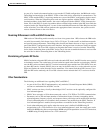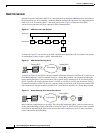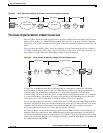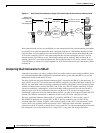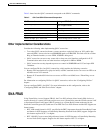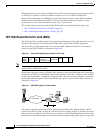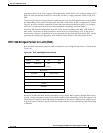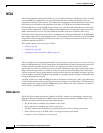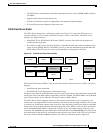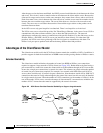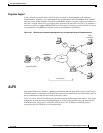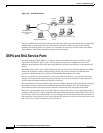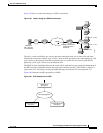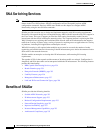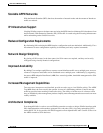
Overview of IBM Networking
NCIA
BC-227
Cisco IOS Bridging and IBM Networking Configuration Guide
78-11737-02
• The NCIA Server communicates with other components in router, such as RSRB, SNASw, DLSw+,
and DSPU.
• Supports both connect-in and connect-out.
• The NCIA client/server model is independent of the upstream implementation.
• It is an efficient protocol between client and server.
NCIA Client/Server Model
The NCIA Server feature uses a client/server model (see Figure 101), where the NCIA server is a
software module on a Cisco router and the NCIA client is a PC or workstation. The NCIA server
performs two major functions:
• Establishes TCP to NCIA Data Link Control (NDLC) sessions with clients for the purpose of
sending and receiving data.
• Uses the Cisco link services interface (CLSI) to communicate with other software modules in the
router, such as SNASw, DLSw+, and DSPU, and acts as the data intermediary between them and
NCIA clients. The NCIA server’s role as an intermediary is transparent to the client.
Figure 101 NCIA Server Client/Server Model
NCIA Data Link Control (NDLC) is the protocol used between clients and servers. NDLC serves two
purposes:
• Establishes the peer connection
• Establishes the circuit between the client and the server
The peer session must be established before an end-to-end circuit can be set up. During the set up period
for the peer session, the MAC address representing a client is defined. The MAC address can be defined
by the client or by the server when the client does not have a MAC address.
The NCIA Server feature supports connect-in and connect-out (from the server’s perspective), but
connect-out is not supported if the client station does not listen for the incoming connection. For a server
to connect-out, clients must connect to the server first. After registering itself by providing its own MAC
address, the client can then optionally disconnect from the server. When a server receives an explorer,
and its destination MAC address is registered, an NCIA server will connect to that client if it is not
connected. For NetBIOS explorers (addressed to functional address 0xC00000000080), the TCP session
must remain up so that the server can broadcast the explorers to the client. If the TCP session is down,
the server will not send the NetBIOS explorers to a client, even when the client is registered.
51913
LLC2
SNASw
Ethernet Token Ring
TCP/IP TCP/IP
NCIA server RSRB
NDLC
DLSw+ DLSw local switch DSPU
NCIA client
SNA



